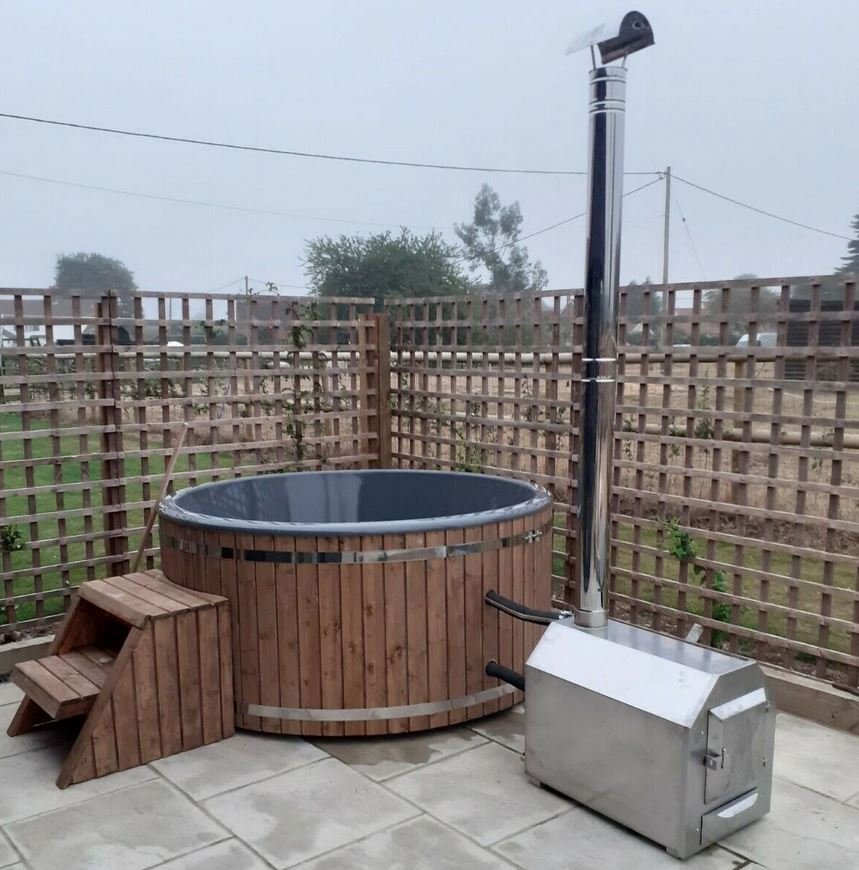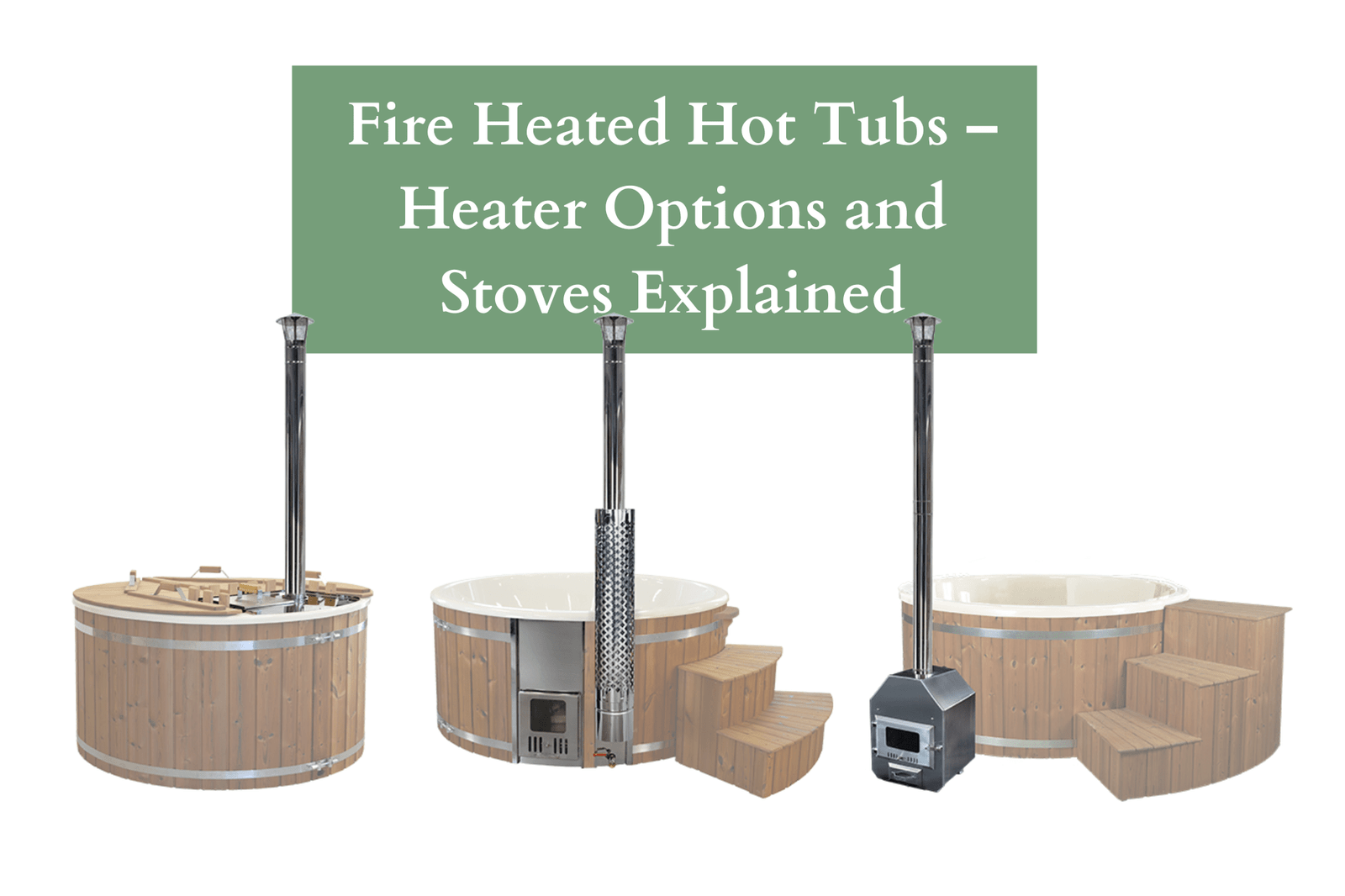When choosing a wood-fired hot tub, there are many alternatives to consider, particularly when more costly elements like the wood stove are incorporated. For those looking for a classic, rustic heating solution for their hot tub, wood-fired stoves are a popular alternative. This article will look at the many kinds of heaters available for wood-fired hot tubs and discuss their advantages and disadvantages in order to help you make an educated decision and ensure that your wood-fired hot tub is nothing less than a joy to use every time you light the fire.
What Kinds of Heaters Are Available?
The adjustable wood-fired burner that warms your tub is sometimes mistaken with the kind of tub. Because you’ll use the stove every time you go in the tub, you may choose a heater that fits your budget, lifestyle, and the overall aesthetic of your wood-fired hot tub. Hot tub wood-burning stoves are classified into three types:
- Internal
- External
- Integrated External
These stoves generally heat the water in the hot tub by burning wood or other biomass fuels, and they may give a natural, eco-friendly heating solution. So, what’s the difference between the models?
Internal Stoves
The swimming area of a wood-fired hot tub is separated from the internal heater by a wooden fence that has an inside submerged stove. They are filled from above and are often the most cheap heating option. Because there is room to save by incorporating the heater into the hot tub body, internal heaters are a perfect choice for places where access to the area surrounding the hot tub is restricted.
Because they are immersed in the bathing water, internal heaters function extremely easily and effectively. The water itself receives all of the heat from the stove body. When compared to other forms of heaters, internal stoves are often the less expensive alternative. The capacity of a wood-fired hot tub is limited by 2 persons because to the space that the heather takes up in the interior structure, which is a disadvantage. Consideration to make while selecting a hot tub with an internal burner. A hot tub that can hold four to six people would hold four people with an internal heater added, and so forth.
External, integrated stoves
External integrated stoves are associated with high-end wood-burning hot tubs. An external integrated burner is built into the outside of the tub and is only visible from the outside as a sleek surround and a window to the inside. The exterior firebox door of the stove has to be opened for ash emptying and fueling the fire.
Because all of the “workings” are concealed within the tub body and linked to the bathing water through input and output ports inside the hot tub liner, these heaters are often the most appealing alternative. Heat is transferred by gravity currents naturally, therefore there is no need for pumps or electronics. They can only be put on fiberglass-lined tubs because to the strength needed in the liner for molding around the burner within the hot tub body.
External Stoves
As suggested by the name, there is a separate heater outdoors and adjacent to the hot tub. Heat is transmitted from the heater to the bathing water by gravity convection currents via two hoses for intake and output. External heaters may be installed in any style of wood-fired hot tub, but because to their accessibility, they are often the easiest to light and maintain.
Despite the fact that they are a common option due to their simplicity, it should be noted that more space is required to install the stove close to the hot tub, and safety measures should be made to protect users—especially children—from the scorching surfaces. More people can fit in a hot tub of a given size since all of the parts of these heaters are separated.

Chimneys on hot tub stoves
A chimney is necessary for any wood-burning stove in order to expel the smoke created by the fire that warms your tub. The chimney connects to the stove and vents vertically. The chimney should be considered when choosing the ideal heater for your wood-fired hot tub since they will become heated when the stove has been in use. Chimney guards are an optional item that considerably reduces the danger of injury from coming into touch with the hot metal. Users must be protected from burns produced by contact with the flue.
What heating option is best for a hot tub?
Which heating option is ideal for you is determined by a variety of factors. Consider the following:
- How often do you want to take a bath?
- What purposes will the hot tub serve?
- What type of electricity, gas, or wood do I have accessible?
- How often do you have the opportunity to replace the water?
If you want to be able to take a bath whenever you want with no planning, the electric option is best. To keep the bath warm throughout the year is the purpose of the electric heater. If you utilize the right insulation, the cost of power won’t seem like a huge burden on your budget.
If you like wood burning, have access to a lot of wood, or want to take a bath in a cabin but don’t have a lot of electricity, wood fire bathtubs are ideal for you. Wood has to be burned for two to four hours in order to heat the tub to bathing temperature. Simply fill the pool with water, heat it up, and then empty it after the stove has cooled if there is a lake nearby. Insulation is not an issue if you use the pool this way. The ideal option for wood pools is a mall filter, which is brought in after use and hangs on the edge to clean for a few hours after each bath. You may always combine the pool with a purification plant if you don’t want to empty it after every soak. When combined with a germicide without chlorine, you may use the same bathwater for up to a month.
Even in the winter, it is great to keep the water heated in a wood-fired bath. Use our pre-made insulation kits ideally to completely insulate the pool for the most insulating benefit. The water may resist frost for a month or more. In colder winters, maintenance fires may need to be lit once a week, so pay attention to the water. Since the water in the external stove freezes more quickly than the water in the bath, you may need to keep it apart from the pool water if you pick this option. If you wish to use wood burning as heating and keep the water flowing even in the cold, we advise installing an inside stove. If anything freezes in the south, bear in mind that there are no certainties, so keep an eye on the water to make sure it doesn’t.
Gas is used similarly to a wood burner but doesn’t produce smoke, making it perfect for crowded places. Since you shouldn’t keep gas or a heater outdoors in below-freezing temperatures, storing water in the winter is less acceptable.
